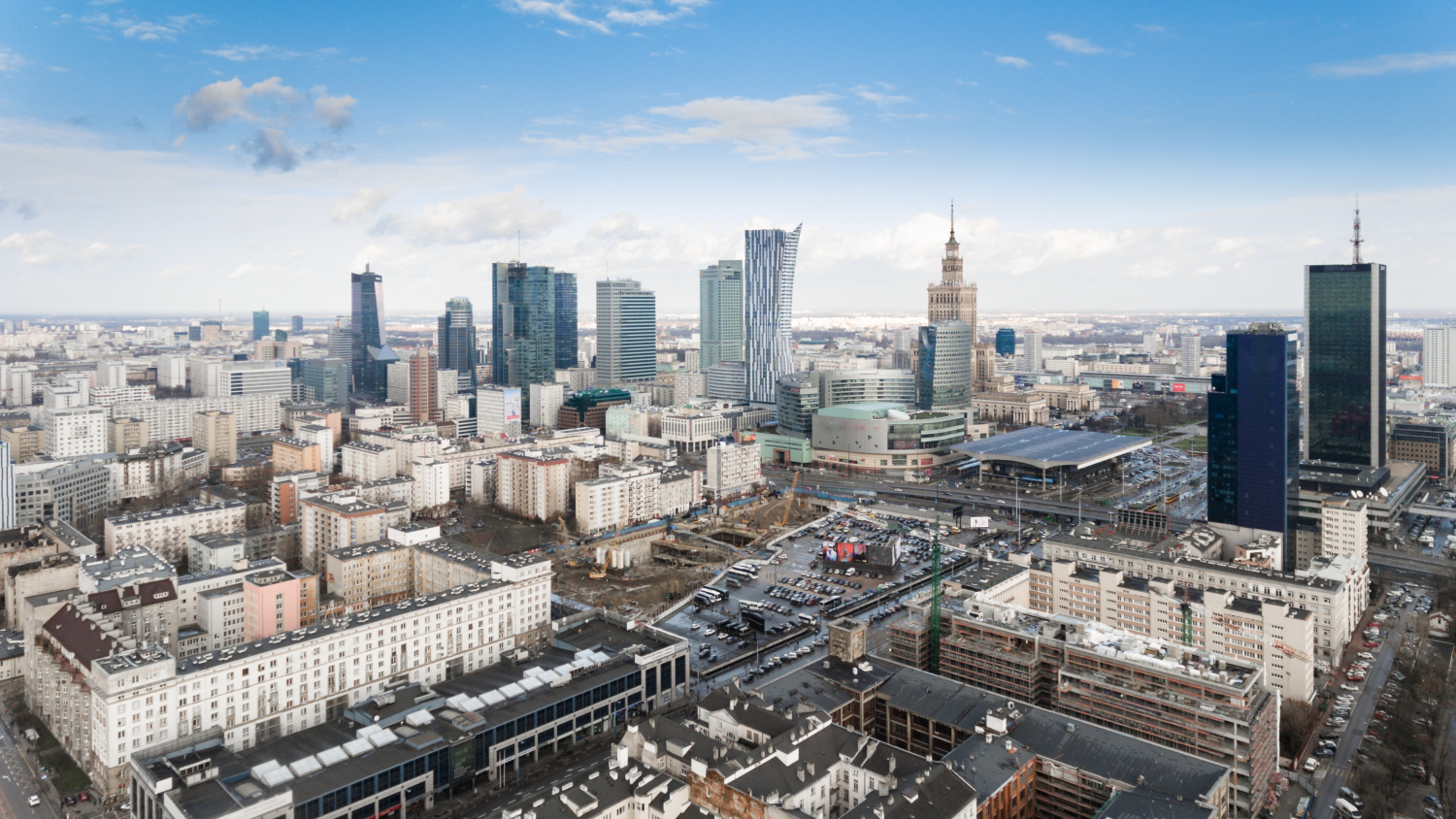
Upward pressure on rental rates and rising construction costs on the one hand and a growing focus on ESG and repositioning of commercial buildings on the other. Faced with the current pace of change in the real estate market, many investors are looking at 2023 with a degree of uncertainty. Are there any reasons to be fearful? And how will the economic slowdown shape trends and sentiments in each real estate sector in the short term? Cushman & Wakefield answers these questions and more in the fourth edition of its "Trends Radar" report, which presents forecasts and potential development trends for the Polish real estate market.
A wave of cost increases across the market
One of the notable trends seen across all market sectors for quite some time has been the increase in construction costs and service charges in commercial buildings, which has sent rental rates rising. While the situation in the construction market is expected to stabilize in the coming quarters, record-high utility costs are likely to adversely affect tenants’ budgets.
"Rent indexation scheduled in lease agreements for early 2023 will push rental rates up by 7-9% in a single move. We also expect that service charges will increase by around 25-60%. The actual growth in service charges will largely depend on the price of electricity contracted by landlords for 2023 and whether landlords applied for the freezing of energy prices for micro, small and medium-sized enterprises", comments Katarzyna Lipka, Head of Consulting & Research, Cushman & Wakefield.
With the energy crisis worsening, sustainability strategies will continue to gain in importance. Faced with the need to adapt real estate to meet the EU’s new regulations on reducing carbon footprints, investors will need to upgrade individual assets or even whole property portfolios. However, if an HBU analysis reveals that a building could be repurposed more successfully, the landlord might be more willing to put it to a different use.
"Mitigating the environmental impact of properties and green certification should certainly not be reduced to cost-cutting only. There is, however, no denying that improving the energy efficiency of buildings and the increasingly popular green leases are likely to boost the bottom line of market players and add value to properties in the long term", says Katarzyna Lipka.
Office supply gap
In 2020, amid successive government-mandated lockdowns and the rise of home office, there was widespread talk of a massive shift away from offices, which was expected to result in a substantial surplus of office space. Now, three years after the outbreak of the pandemic, quite a different scenario is likely to materialize.
"The reason is a slowdown in development activity, with 2023’s new supply in Warsaw expected to reach around 60,000 sq m, accounting for approximately 20% of the five-year average. Regional city office markets are also likely to witness lower new supply levels in the coming quarters. Office demand will, however, be highly correlated with the pace of economic growth. That said, 2023 is shaping up to be a year of renewing leases made in the peak years of 2018-2019, which is expected to bolster this year’s demand", explains Jan Szulborski, Office Market Expert, Cushman & Wakefield.
Demand will continue to be driven by the business services sector, which is likely to see its share of total take-up grow even further in the long term. According to forecasts referred to in Trends Radar, the deeper the global recession, the more willing global corporations will be to look for savings in more costly Western European locations, which will benefit Poland.
Looking ahead, a major challenge facing the investment market will be the limited availability of finance. Against this background, investment volumes will continue to be driven by CEE investors who remain active and look for new investment opportunities.
Retail market responds to consumer sentiments
The negative annual retail sales growth forecast for 2023 and the record-high service charges will be the two key challenges facing the retail market. Segments which are likely to be the hardest hit by the crisis include Home & Deco, due to a decline in sales of new flats, and the F&B sector, which may be unable to rise to new challenges following the tough COVID-19 times. On the other hand, value retailers such as Action, Dealz, TEDi, Pepco, Sinsay, NKD, and KiK, which favour cheaper locations, i.e. retail parks, will maintain their growth momentum.
"Many retail tenants are just emerging from the COVID-19 crisis and, having learnt the lesson during the pandemic period, they now expect more lease flexibility from landlords. Both short-term leases and leases with turnover-based rents only are becoming increasingly popular. Some new leases will also incorporate clauses with a cap on rental and service charges growth", comments Ewa Derlatka-Chilewicz, Retail Market Expert, Cushman & Wakefield.
Protracted decision-making regarding both new locations and lease renewals is likely to push vacancy rates up and result in lower pre-let figures for projects in the pipeline despite more subdued developer activity. Although 2022 ended with a good result of 350,000 sqm of new retail space, 2023 is expected to witness a slowdown in new supply growth as only 280,000 sq m out of the planned 600,000 sqm is currently under construction. Looking forward, we can expect that in the long term developers will be increasingly building their plans around locations close to housing estates, schemes activating and supporting local communities and retail parks in smaller cities.
In 2022, the retail property market witnessed the highest investment activity in the last few years, with its year-end volumes significantly surpassing the previous year's result. The increased liquidity in the retail market may be weakened by the economic climate and higher financing costs in the medium term. The long-term outlook remains positive for retail properties which demonstrated their market strength and resilience to e-commerce during both the pandemic and the post-Covid period.
The industrial sector? growth to stabilize
The industrial market will continue to be driven by e-commerce in the near future, but its rate of growth is expected to plateau. According to Trends Radar data, e-commerce more than doubled (+127%) in the last four years, posting the average annual growth of 23%. E-commerce is broadly expected to grow by 11% per annum over the next five years.
"We expect that the European industrial market will evolve towards nearshoring in the coming years, which will minimize the risk of supply disruptions caused by unforeseeable events. This in turn is likely to benefit Poland as some Western European countries are taking measures to reduce their reliance on Asian markets. In addition, some companies from Poland’s eastern neighbours are investing their capital in our country on account of geographical proximity and much greater safety of doing business here", explains Vitalii Arkhypenko, Industrial Market Expert, Cushman & Wakefield.
In the long term, this sector is expected to move decisively towards innovations and further improvements such as production automation, shortening supply chains thanks to 3D logistics or improving the energy efficiency of buildings. For example, according to developers’ calculations, buildings with photovoltaic panels, better insulated walls and roofs, LED lighting and an energy management system will, on average, consume up to 50% less electricity; in addition, LEDs, supported by a smart lighting control system DALI (Digital Addressable Lighting Interface), will consume 90% less power than standard lighting.
A notable trend in the real estate capital market is that CE investors account for a growing proportion of investment volumes. Lending activity is slowing down due to higher costs of financing new projects, which is likely to result in supply constraints in the logistics sector in the medium term.
Residential market under pressure
The Polish residential market has been hit hard by an outflow of mortgage buyers and a commensurate fall in demand for new flats. This has led to new supply constraints and, as expected, to price falls, especially in the secondary market, which is likely to see even double-digit falls year to year. New supply growth will slow down in the primary market due to high prices of plots and high construction costs, with the prices of new flats expected to drop less sharply compared to the secondary market.
Demand for flats from individual buyers is expected to weaken further in the coming months due to high interest rates and decreasing mortgage availability. As a result, developers will be increasingly shifting their focus to PRS projects to meet the record demand for rental flats.
Cushman & Wakefield, however, expects that the residential market will begin to recover after a period of stagnation. Given the high housing gap and the expected loosening of the lending policy when inflation falls back close to the NBP’s inflation target, both residential supply and demand will begin to pick up – in smaller cities too. It should be underscored that both developers and investors began to shift their attention not only to large cities, but also to smaller local markets and suburbs where land for residential projects is more readily available and cheaper. This trend is set to increase.
"In addition, Poland’s changing demographics will drive the growth in senior housing formats – not only typical care homes, but assisted living flats in particular. The co-living sector is also expected to be back in the game again following a brief period of stagnation caused the pandemic and travel restrictions", says Karolina Furmańska, Residential Market Expert, Cushman & Wakefield.
At the same time, energy efficiency and ESG solutions will begin to play an increasingly important role in the coming years as they will translate into substantial savings for Polish consumers amid the ongoing crisis in the energy market in particular.
Hotels riding high
The number of nights sold by Polish hotels in 2020 fell by 48% but in 2021 was up by 45%. The upward trend was also observed in 2022 and is expected to continue throughout 2023, with hotel occupancy to be driven largely by domestic demand. The increase in hotel occupancy rates will also be fuelled by the steady recovery in the MICE segment. On the other hand, rising operating costs are likely to result in higher ADRs.
The recovery in demand is expected to boost supply growth across the country. This trend is borne out by Cushman & Wakefield’s H2 2021 Operator Beat report, as four Polish cities are amongst the top-10 hospitality markets, confirming Poland as the most attractive country within the CEE region for hotel operators.
"What’s more, investors are targeting not only the largest Polish cities such as Warsaw and Cracow, but also leisure destinations, which - in turn - is creating a more positive price perception by investors. Going forward, capital market activity is expected to remain subdued due to constrained financing as well as economic and geopolitical concerns. Transactional activity is, however, likely to pick up if more owners begin considering selling their assets", explains Maciej Prończuk, Hospitality Market Expert, Cushman & Wakefield.
Sustainability matters will gain in importance in decision-making regarding debt finance and the availability of refinancing and restructuring options. Credit and due diligence processes are now integrating ESG-related KPIs, allowing lenders to deploy their resources to more sustainable projects. All in all, it is clear that lenders are favouring ESG-compliant businesses and projects.



